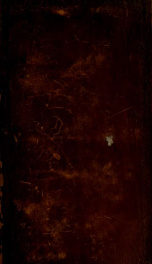lady

A lady is the female equivalent of a lord, the counterpart of a gentleman, or any adult woman, though this usage is constrained. The word comes from Old English hlǣfdige; the first part of the word is a mutated form of hlāf, "loaf, bread", also seen in the corresponding hlāford, "lord". The second part is usually taken to be from the root dig-, "to knead", seen also in dough; the sense development from bread-kneader, or bread-maker, or bread-shaper, to the ordinary meaning, though not clearly to be traced historically, may be illustrated by that of "lord". The primary meaning of "mistress of a household" is now mostly obsolete, save for the term landlady and in set phrases such as "the lady of the house." This meaning is retained in the United States, however, in the title First Lady for the wife of an elected official. In many European languages the equivalent term serves as a general form of address equivalent to the English Missus usually written Mrs (French Madame, Spanish Señora, Italian Signora, German Frau, Polish Pani, etc.). In those languages it is correct to address a woman whose name is unknown as Madame, Señora, etc, but in English addressing a woman as Lady is incorrect and can be insulting. The equivalent English term for politely addressing a woman is Madam, or in the United States the shortened form Ma'am. The special use of the word as a title of the Virgin Mary, usually Our Lady, represents the Latin Domina Nostra. In Lady Day and Lady Chapel the word is properly a genitive, representing hlǣfdigan "of the Lady". The word is also used as a title of the Wiccan Goddess, The Lady. In Britain, and possibly elsewhere, 'lady' is often, but not always, simply a courteous synonym for 'woman'. It has a formal and respectful quality, being used to describe an older woman such as 'an old lady' or when speaking about a woman to a child (eg. "Give the money to the lady.") It may be used, however incongruously, in descriptions such as "the cleaning lady" or even "a bag lady" (tramp). Public lavatories are often distinguished by signs showing simply "Ladies" or "Gentlemen" However, formally "lady" is the female counterpart to gentleman and higher ranks in society, from gentlemen, through knights, to lords. During the 15th and 16th centuries princesses or daughters of the blood royal were usually known by their first names with "The Lady" prefixed, e.g. The Lady Elizabeth; since Anglo-Saxon did not have a female equivalent to princes or earls or other royals or nobles, aside from the queen, women of royal and noble status simply carried the title of "Lady". As a title of nobility the uses of "lady" are parallel to those of "lord". It is thus a less formal alternative to the full title giving the specific rank, of marchioness, countess, viscountess or baroness, whether as the title of the husband's rank by right or courtesy, or as the lady's title in her own right. A peeress's title is used with the definite article: Lord Morris's wife is "The Lady Morris". A widow's title derived from her husband becomes the dowager, e.g. The Dowager Lady Smith. The title "Lady" is also used for a woman who is the wife of a Scottish feudal baron, the title "Lady" preceding the name of the barony. In the case of younger sons of a duke or marquess, who by courtesy have "Lord" prefixed to their given and family name, the wife is known by the husband's given and family name with "The Lady" prefixed, e.g. The Lady John Smith. The daughters of dukes, marquesses and earls are by courtesy ladies; here that title is prefixed to the given and family name of the lady, e.g. The Lady Jane Smith, and this is preserved if the lady marries a commoner, e.g. Mr John and The Lady Jane Smith. The predicate 'The' should be used prior to "Lady" or "Lord" in all cases, except after a divorce for women who do not hold the courtesy title of "Lady" in their own right, e.g. or Jane, Lady Smith (the ex-wife of Lord John Smith). "Lady" is also the customary title of the wife of a baronet or knight, but in this case with neither the article nor Christian name: "Lady" with the surname of the husband only, Sir John and Lady Smith. When a woman divorces a knight and he marries again, the new wife will be Lady Smith while the ex-wife becomes Jane, Lady Smith. In more recent years, usage of the word the lady is even more complicated. Journalist William Allen White noted one of the difficulties in his 1946 autobiography. He relates that a woman who had paid a fine for prostitution came to his newspaper to protest, not that the fact of her conviction was reported, but that the newspaper had referred to her as a "woman" rather than a "lady." Since that incident, White assured his readers, his papers referred to human females as "women", with the exception of police court characters, who were all "ladies". White's anecdote touches on a phenomenon that others have remarked on as well. In the late nineteenth and early twentieth century, in a difference reflected in Nancy Mitford's essay "U vs. non-U", lower class women strongly preferred to be called "ladies" while women from higher social backgrounds were content to be identified as "women." Alfred Ayers remarked in 1881 that upper middle class female store clerks were content to be "saleswomen," while lower class female store clerks, for whom their job represented a social advancement, indignantly insisted on being called "salesladies." Something of this sense may also be underneath Kipling's lines: These social class issues, while no longer on the front burner in the twenty-first century, have imbued the formal use of "lady" with something of an odour of irony (e.g: "my cleaning lady"). It remains in use, for example, as a counterpart to "gentleman," in the phrase "ladies and gentlemen," and is generally interchangeable (in a strictly informal sense) with "woman" (as in, "The lady at the store said I could return this item within thirty days."). "Ladies" is also the normal text on the signs to any female toilet in a public place in the UK, again paired with "Gentlemen" (or "Gents"). Non-sexist language guidelines forbid its use to refer attributively to the sex of a working person, as in lady lawyer and lady doctor. Many find these to have a condescending nuance not shared by female lawyer or woman doctor; compare poetess for a similar problem. Advocates of non-sexist language recommend not using the word at all, whereas others permit its parallel use in the same circumstances in which a man would be called a gentleman or lord (for example, titling washrooms Men and Ladies would be considered sexist, but using either Men and Women or Ladies and Gentlemen would be acceptable; as is landlady as the parallel of landlord, or Lady Mayoress for Lord Mayor.) This article incorporates text from the Encyclopædia Britannica, Eleventh Edition, a publication now in the public domain.
do you like this author?
What readers are saying
What do you think? Write your own comment on this book!
write a commentWhat readers are saying
What do you think? Write your own comment on this author!
write a commentBook list

A free comment on the late Mr. W-----g--n's apology for his conduct; which clears up the obscurities of that celebrated posthumous work, and dissipates the clouds in which the author has thought proper to envelope his meaning
Series:
Unknown
Year:
Unknown
Raiting:
3.5/5
Reply to: An apology for the conduct of a late celebrated second-rate minister, from 1729 ... till 1746 ... / Thomas Winnington
Show more
add to favoritesadd In favorites

The Mourner's Book
Series:
Unknown
Year:
Unknown
Raiting:
3/5
Book digitized by Google from the library of Harvard University and uploaded to the Internet Archive by user tpb.
Show more
add to favoritesadd In favorites

The Lady's Companion: Or, Sketches of Life, Manners and Morals at the Present Day
Series:
Unknown
Year:
Unknown
Raiting:
4.5/5
Book digitized by Google and uploaded to the Internet Archive by user tpb.
Show more
add to favoritesadd In favorites
Book list

A free comment on the late Mr. W-----g--n's apology for his conduct; which clears up the obscurities of that celebrated posthumous work, and dissipates the clouds in which the author has thought proper to envelope his meaning
Series:
Unknown
Year:
Unknown
Raiting:
3.5/5
Reply to: An apology for the conduct of a late celebrated second-rate minister, from 1729 ... till 1746 ... / Thomas Winnington
Show more
add to favoritesadd In favorites

The Mourner's Book
Series:
Unknown
Year:
Unknown
Raiting:
3/5
Book digitized by Google from the library of Harvard University and uploaded to the Internet Archive by user tpb.
Show more
add to favoritesadd In favorites

The Lady's Companion: Or, Sketches of Life, Manners and Morals at the Present Day
Series:
Unknown
Year:
Unknown
Raiting:
4.5/5
Book digitized by Google and uploaded to the Internet Archive by user tpb.
Show more
add to favoritesadd In favorites
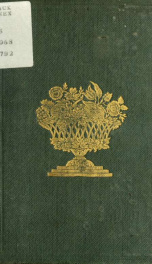
The field, the garden and the woodland, or, Interesting facts respecting flowers and plants in general
Series:
Unknown
Year:
Unknown
Raiting:
2.5/5
Show more
add to favoritesadd In favorites

The Tyrolese Minstrels
Series:
Unknown
Year:
Unknown
Raiting:
3.5/5
Book digitized by Google from the library of Harvard University and uploaded to the Internet Archive by user tpb.
Show more
add to favoritesadd In favorites

A Winding Rill of Thought in Relation to Nature, Providence and Grace
Series:
Unknown
Year:
Unknown
Raiting:
2.5/5
Book digitized by Google and uploaded to the Internet Archive by user tpb.
Show more
add to favoritesadd In favorites
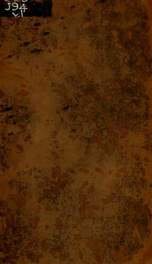
Julia de Vienne : a novel, imitated from the French 1
Series:
Unknown
Year:
Unknown
Raiting:
5/5
Show more
add to favoritesadd In favorites
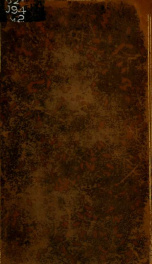
Julia de Vienne : a novel, imitated from the French 2
Series:
Unknown
Year:
Unknown
Raiting:
3.5/5
Show more
add to favoritesadd In favorites
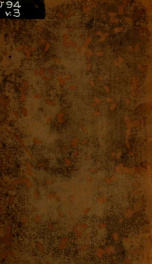
Julia de Vienne : a novel, imitated from the French 3
Series:
Unknown
Year:
Unknown
Raiting:
2.5/5
Show more
add to favoritesadd In favorites

Julia de Vienne : a novel, imitated from the French 4
Series:
Unknown
Year:
Unknown
Raiting:
4.5/5
Show more
add to favoritesadd In favorites

Ella Herbert, or, Self-denial
Series:
Unknown
Year:
Unknown
Raiting:
3/5
Book digitized by Google from the library of Harvard University and uploaded to the Internet Archive by user tpb.
Show more
add to favoritesadd In favorites

The Englishwoman in Russia : impressions of the society and manners of the Russians at home
Series:
Unknown
Year:
Unknown
Raiting:
4.5/5
Show more
add to favoritesadd In favorites
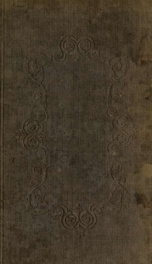
Ravensdale : a tale 1
Series:
Unknown
Year:
Unknown
Raiting:
4.5/5
Wolff, R.L. 19th cent. fiction
Show more
add to favoritesadd In favorites
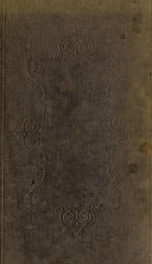
Ravensdale : a tale 2
Series:
Unknown
Year:
Unknown
Raiting:
5/5
Wolff, R.L. 19th cent. fiction
Show more
add to favoritesadd In favorites

The Lady's companion, or, Sketches of life, manners, and morals, at the ...
Series:
Unknown
Year:
Unknown
Raiting:
3/5
Book digitized by Google from the library of Harvard University and uploaded to the Internet Archive by user tpb.
Show more
add to favoritesadd In favorites

An Angel's message : being a series of angelic and holy communications received by a lady
Series:
Unknown
Year:
Unknown
Raiting:
3/5
A record of holy communications spoken to a deaf woman whose name is not given in the text
Show more
add to favoritesadd In favorites
What readers are saying
What do you think? Write your own comment on this author!
write a commentGenre
- Books
- Books / Children's Books / Literature
- Literature & Fiction / Genre Fiction / Horror / Dark Fantasy
- Nonfiction / Politics / General
- Literature & Fiction / Poetry
- Nonfiction / Education / Education Theory / History
- Books / Gardening
- Books / Wood-engraving
- Biographies & Memoirs / Specific Groups / Women
- Reference / Atlases & Maps / World
if you like lady try:
readers also enjoyed
What readers are saying
What do you think? Write your own comment on this author!
write a commentGenre
- Books
- Books / Children's Books / Literature
- Literature & Fiction / Genre Fiction / Horror / Dark Fantasy
- Nonfiction / Politics / General
- Literature & Fiction / Poetry
- Nonfiction / Education / Education Theory / History
- Books / Gardening
- Books / Wood-engraving
- Biographies & Memoirs / Specific Groups / Women
- Reference / Atlases & Maps / World
if you like lady try:
readers also enjoyed
Do you want to read a book that interests you? It’s EASY!
Create an account and send a request for reading to other users on the Webpage of the book!

